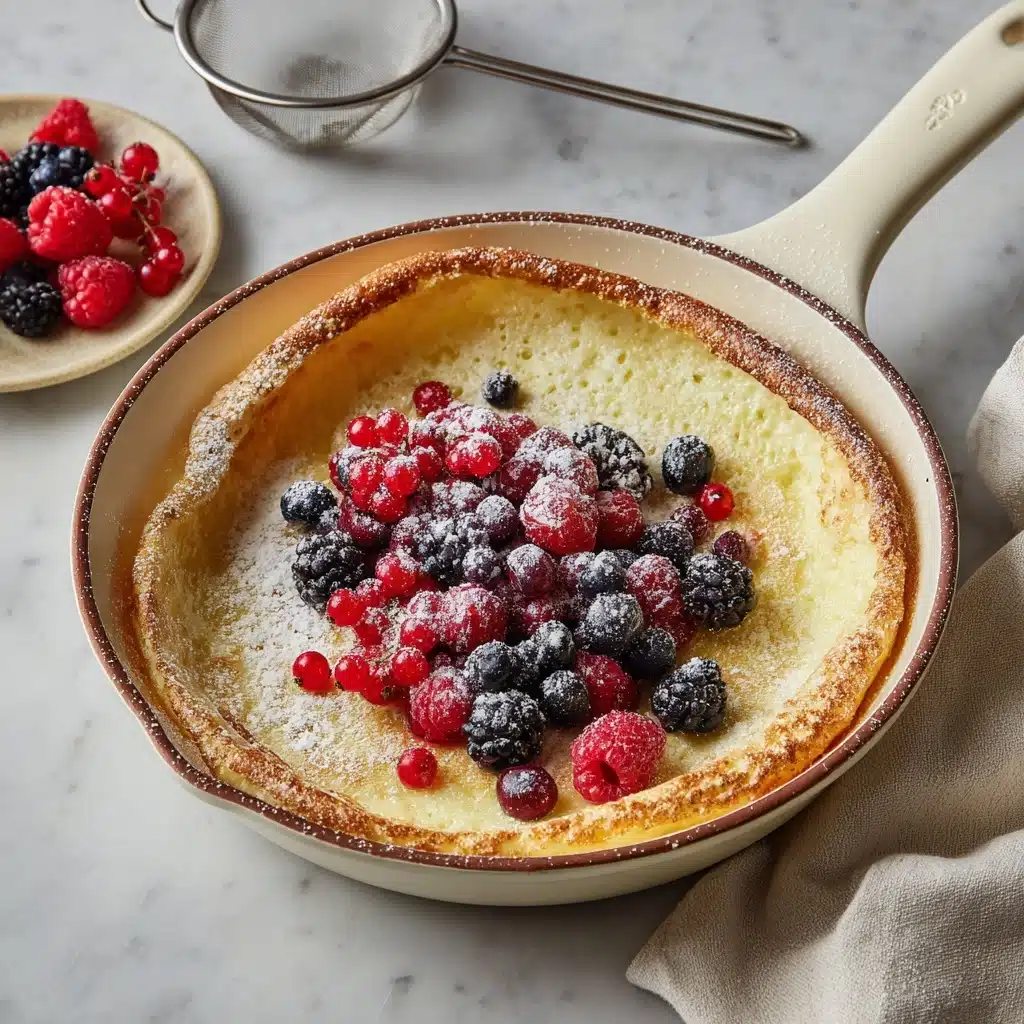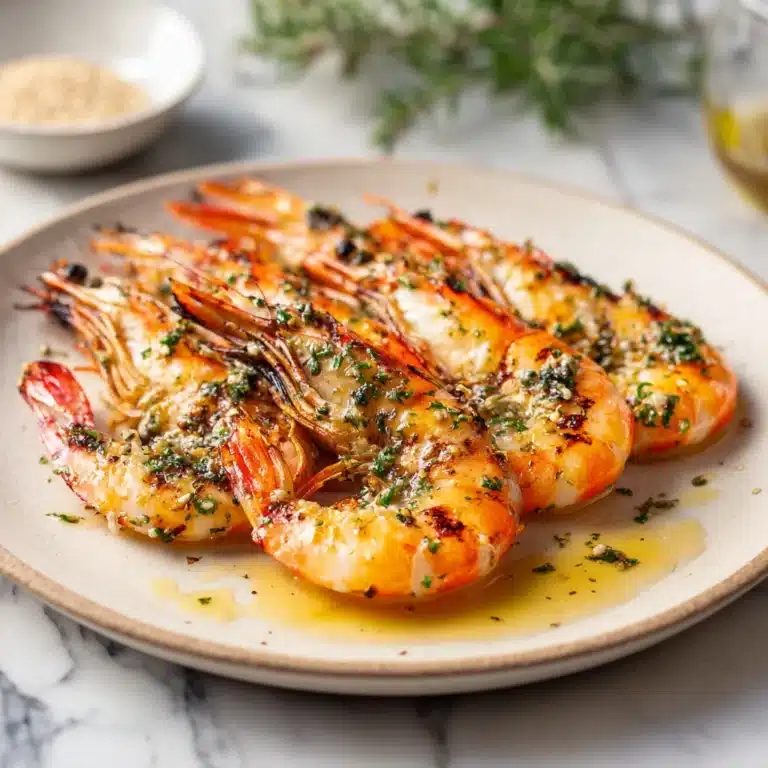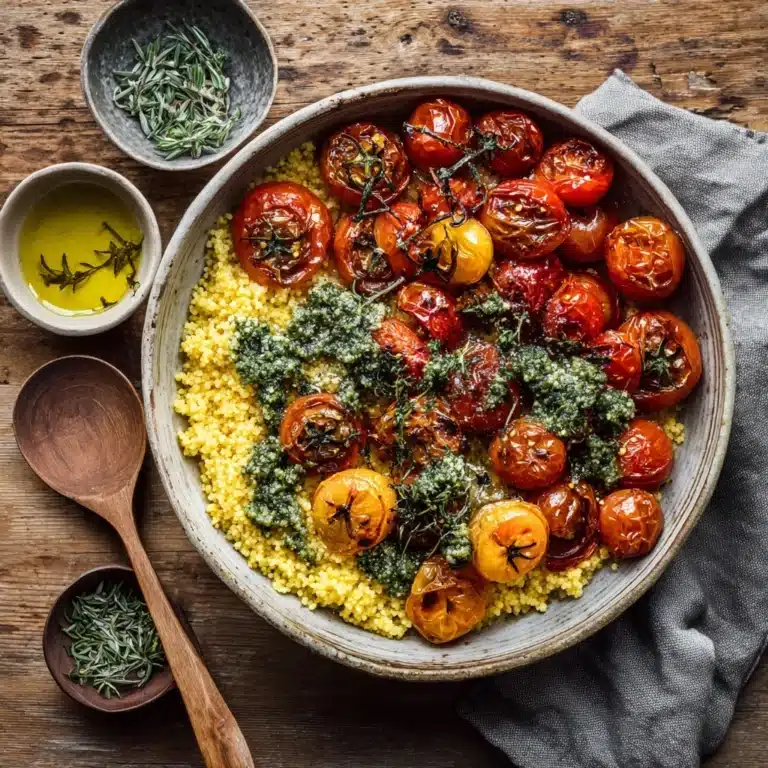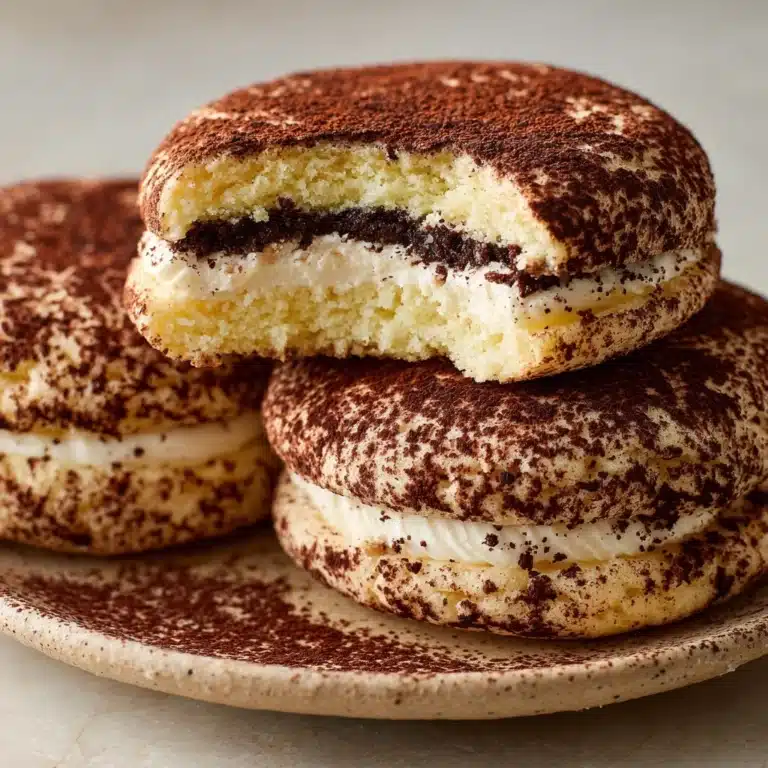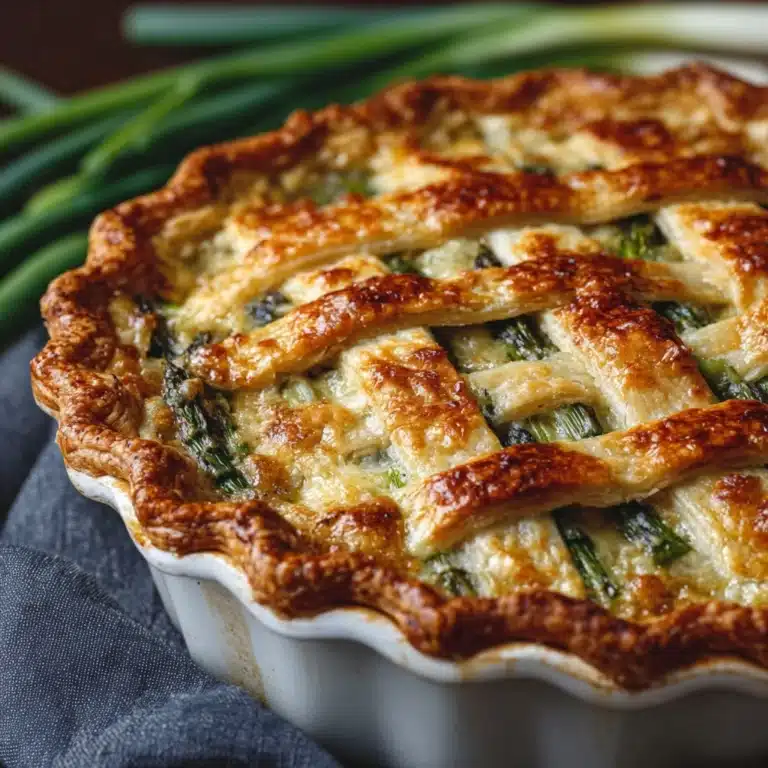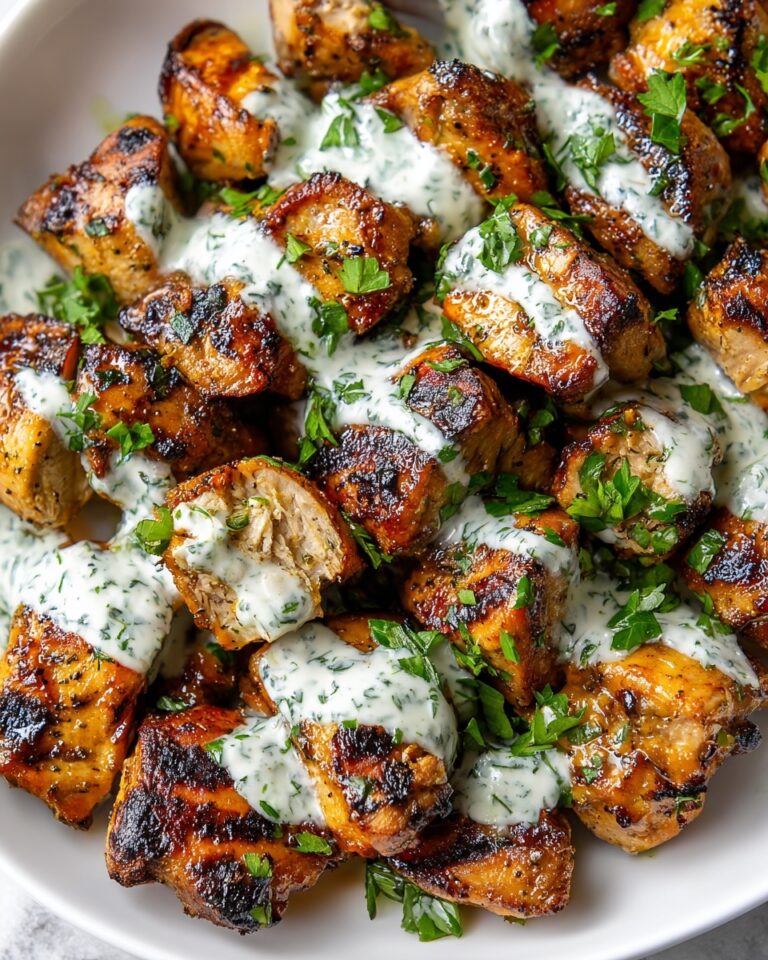A piping-hot Dutch Baby is one of those magical dishes that never fails to wow at the table, whether you’re orchestrating a laid-back brunch or craving something indulgent on a sleepy weekend morning. This airy baked pancake puffs dramatically in the oven, turning golden and crisp at the edges while remaining delightfully custard-y in the center. With a handful of simple ingredients, the result is pure comfort–almost like a cross between a crepe, a popover, and a soufflé. If you haven’t made a Dutch Baby yet, get ready for a new breakfast favorite!
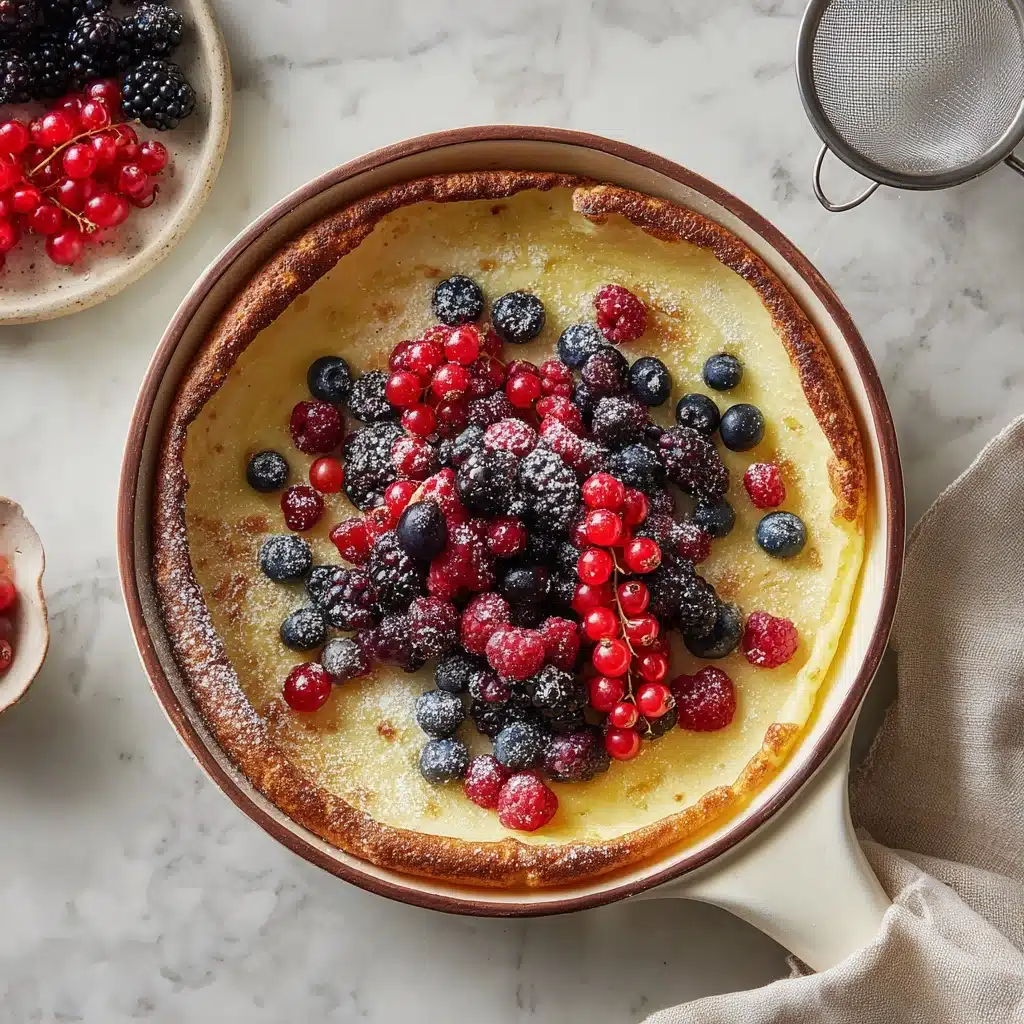
Ingredients You’ll Need
The charm of a Dutch Baby is in its simplicity—every ingredient shines, from the rich eggs to the gentle sweetness of vanilla. Each component plays a part in creating that irresistibly light, tender, and slightly crisp bite, so don’t be tempted to skip or substitute if you want the classic result!
- Eggs: The true star, lending lift and a lovely custardy texture.
- Whole milk: Brings richness and the right amount of moisture for a silky batter.
- All-purpose flour: Provides structure, helping the Dutch Baby rise beautifully in the oven.
- Granulated sugar: Just enough to add subtle sweetness without overpowering.
- Pure vanilla extract: For warm, aromatic flavor that makes each bite extra inviting.
- Salt: Sharpens the flavors and keeps the pancake from tasting flat.
- Unsalted butter: Gives a rich, golden base and prevents sticking—essential for those crisp edges.
- Powdered sugar and fresh lemon juice (optional): For that classic, irresistible finish or a bright, tangy contrast.
How to Make Dutch Baby
Step 1: Preheat the Oven and Skillet
Start by setting your oven to 425°F (220°C), and place your 10-inch cast iron or oven-safe skillet inside while the oven preheats. Preheating both the oven and pan is non-negotiable—this is the secret behind that signature puff as soon as the batter hits the hot surface. The sizzle means you’re on the right track.
Step 2: Whisk the Batter Smooth
While your skillet is heating, grab a medium bowl and vigorously whisk together the eggs, milk, flour, sugar, vanilla, and salt. You want the mixture super smooth, with no visible lumps (a handheld whisk works just fine, but a blender makes it extra silky). Mixing thoroughly ensures even puffing and a beautiful, tender crumb once baked.
Step 3: Melt the Butter
Carefully (and I mean carefully—the pan is very hot!) remove your skillet from the oven. Add the unsalted butter directly to the pan and swirl it around until fully melted and the entire surface is coated. The butter should bubble madly at first, coating the bottom and sides. This step prevents sticking and delivers golden, crispy edges.
Step 4: Pour and Bake
Quickly pour your batter into the prepared skillet. The batter will start to cook immediately on the edges, so work fast! Return the skillet to the oven right away and set your timer for 15 to 20 minutes. The Dutch Baby will begin to climb the sides of the pan and puff up dramatically, turning gorgeously golden at the edges while the center remains slightly custardy.
Step 5: Serve Hot and Fresh
Once your Dutch Baby is puffed and deeply golden, remove it carefully from the oven. Remember, it’s totally normal for it to deflate a bit as it cools! Slide it onto a serving platter or slice it straight from the pan for ultimate effect. Dust with powdered sugar and, if you like, a squeeze of fresh lemon juice or any other topping you crave.
How to Serve Dutch Baby
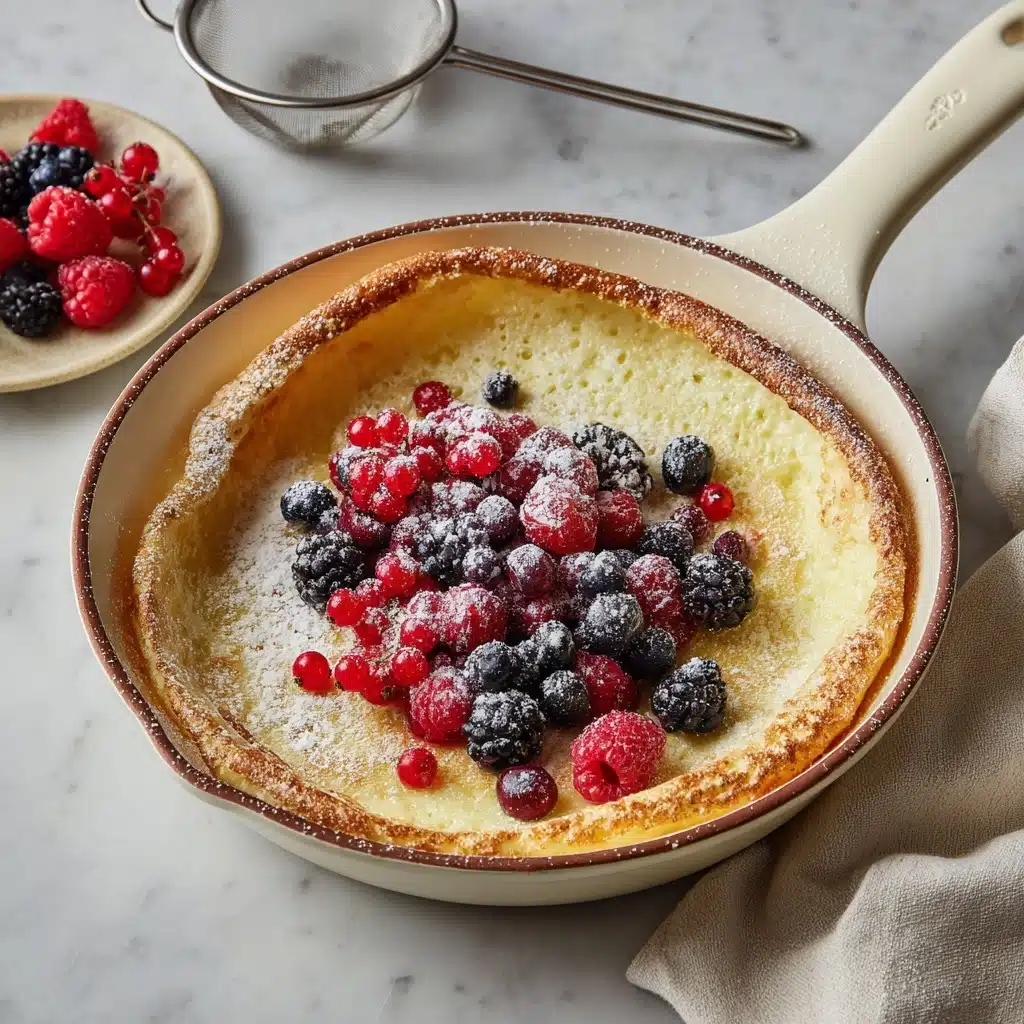
Garnishes
A classic Dutch Baby loves a good flourish: a generous shower of powdered sugar and a quick squeeze of lemon juice is traditional. But you can dress it up with a heap of fresh berries, a cloud of whipped cream, a drizzle of maple syrup, or even thin shavings of chocolate. The beauty is in personalization, so make it your own!
Side Dishes
Round out your Dutch Baby brunch with savory sides for balance—think sizzling strips of bacon, fresh fruit salad, or softly scrambled eggs. If you’re feeding a crowd, serve alongside sausage links or roasted potatoes for a heartier spread. Even a refreshing yogurt parfait works wonderfully.
Creative Ways to Present
The drama of a Dutch Baby’s puff makes it a true showpiece. For extra flair, bake and serve it directly in your cast iron skillet at the table. For individual servings, divide the batter among ramekins or small skillets. Or, cut it into wedges and layer with fruit and yogurt for a delightful breakfast “cake.”
Make Ahead and Storage
Storing Leftovers
Although a Dutch Baby is best right from the oven, you can keep any leftovers covered in the refrigerator for up to two days. Make sure it’s fully cooled before wrapping to prevent condensation, which can make it soggy.
Freezing
Dutch Babies aren’t typically freezer-friendly because their delicate, soufflé-like texture changes. But if you do want to freeze portions, wrap them tightly and place in an airtight container for up to a month. Reheat from frozen for best results.
Reheating
To recapture as much of the fresh-from-the-oven magic as possible, place leftovers in a hot (350°F/175°C) oven for 5 to 10 minutes until warmed through and a bit crisped at the edges. A quick toast in a dry skillet on the stovetop works in a pinch, too—just avoid the microwave, which softens instead of revives.
FAQs
Why did my Dutch Baby deflate after baking?
That’s perfectly normal! Dutch Babies puff up impressively in the hot oven thanks to steam, but as soon as they hit cooler air, they’ll naturally deflate a bit. The texture will still be delicious—custardy in the center with lacy edges. Serve immediately for maximum puff.
Can I make a Dutch Baby without a cast iron skillet?
Absolutely! Any heavy, oven-safe skillet or even a baking dish can be used. Cast iron holds heat especially well and gives great crispy edges, but other materials still work beautifully—just make sure whatever you use is heated well before pouring in the batter.
Is it possible to make the batter ahead of time?
Yes! You can mix the batter the night before and store it covered in the refrigerator. In fact, letting it rest can even help develop flavor. Just be sure to whisk it briefly before pouring into the hot pan to reincorporate any separated flour.
What can I use instead of dairy milk?
Whole milk delivers the richest texture, but any unsweetened non-dairy milk like almond, oat, or soy will work in a pinch. Your Dutch Baby might not puff quite as high, but the flavor and tenderness will still be dreamy.
Can I flavor the Dutch Baby differently?
Of course! While vanilla is classic, you could add a touch of almond extract, a dash of cinnamon, or even some citrus zest to the batter. The Dutch Baby is a wonderful blank canvas for all sorts of flavors and creative twists.
Final Thoughts
There’s something truly special about the way a Dutch Baby transforms ordinary ingredients into an oven-baked delight with barely any effort. It’s playful, impressive, and absolutely delicious. Trust me, once you’ve experienced that first golden puff, you’ll find yourself turning to this recipe anytime you crave a little brunch magic—don’t wait another morning to try it!
Print
Dutch Baby Recipe
- Total Time: 25 minutes
- Yield: 4 servings 1x
- Diet: Vegetarian
Description
A Dutch Baby, also known as a German pancake, is a puffy and delightful oven-baked pancake that makes a perfect breakfast treat. This simple recipe yields a golden, fluffy creation that is sure to impress.
Ingredients
Batter:
- 3 large eggs
- 2/3 cup whole milk
- 2/3 cup all-purpose flour
- 2 tablespoons granulated sugar
- 1/2 teaspoon pure vanilla extract
- 1/4 teaspoon salt
Additional:
- 3 tablespoons unsalted butter
- Powdered sugar and fresh lemon juice for serving (optional)
Instructions
- Preheat the oven: Preheat the oven to 425°F (220°C) and place a 10-inch cast iron skillet or oven-safe skillet inside to heat.
- Mix the batter: In a medium bowl, whisk together eggs, milk, flour, sugar, vanilla, and salt until smooth.
- Prepare the skillet: Carefully remove the hot skillet from the oven, add butter, and swirl to coat.
- Bake the Dutch baby: Pour the batter into the skillet and bake for 15-20 minutes until puffed and golden.
- Serve: Dust with powdered sugar, squeeze fresh lemon juice if desired, and serve hot.
Notes
- A Dutch baby is best enjoyed right out of the oven as it will deflate slightly as it cools.
- Try topping with fresh berries, whipped cream, or maple syrup for added flavor.
- Prep Time: 5 minutes
- Cook Time: 20 minutes
- Category: Breakfast
- Method: Baking
- Cuisine: German-American
Nutrition
- Serving Size: 1/4 pancake
- Calories: 180
- Sugar: 5g
- Sodium: 160mg
- Fat: 9g
- Saturated Fat: 5g
- Unsaturated Fat: 3g
- Trans Fat: 0g
- Carbohydrates: 18g
- Fiber: 0g
- Protein: 6g
- Cholesterol: 145mg
